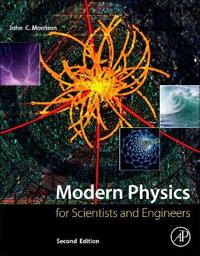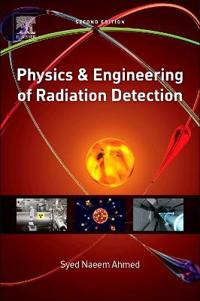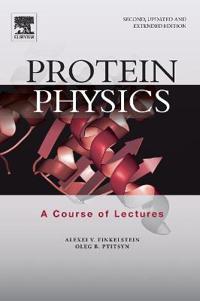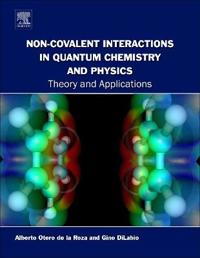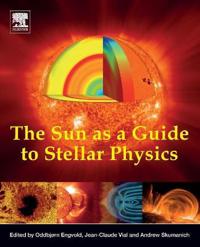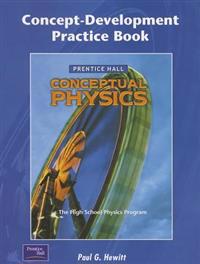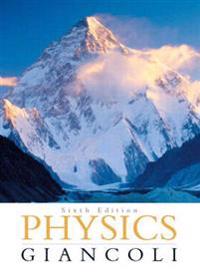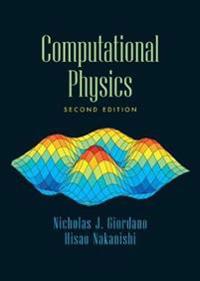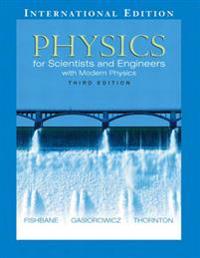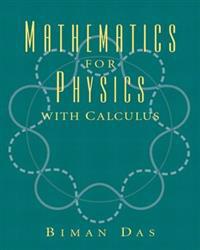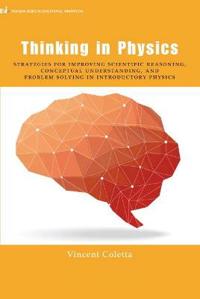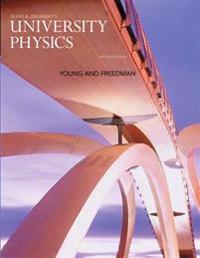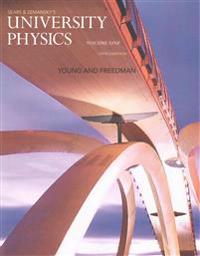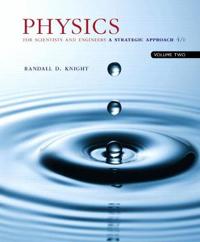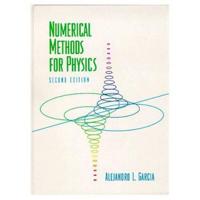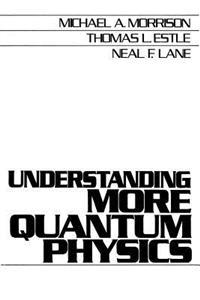Encyclopedic Dictionary Of Condensed Matter Physics (Inbunden)
avCharles P. Poole
ISBN: 9780125614658 - UTGIVEN: 2003-12-01Covers various fields involved in condensed matter physics, such as crystallography, electrical properties, fluids, magnetism, material properties, optics, radiation, semiconductors, and superconductivity, as well as highlights of important related subjects such as quantum mechanics, spectroscopy, s[...]
Fundamentals of Atmospheric Physics (Inbunden)
avMurry L. Salby
ISBN: 9780126151602 - UTGIVEN: 1996-05-23Modern Physics
ISBN: 9780128007341 - UTGIVEN: 2015-02The second edition of Modern Physics for Scientists and Engineers is intended for a first course in modern physics. Beginning with a brief and focused account of the historical events leading to the formulation of modern quantum theory, later chapters delve into the underlying physics. Streamlined c[...]
Physics and Engineering of Radiation Detection (Inbunden)
avSyed Naeem Ahmed
ISBN: 9780128013632 - UTGIVEN: 2014-12Physics and Engineering of Radiation Detection presents an overview of the physics of radiation detection and its applications. It covers the origins and properties of different kinds of ionizing radiation, their detection and measurement, and the procedures used to protect people and the environmen[...]
Protein Physics
ISBN: 9780128096765 - UTGIVEN: 2016-06Protein Physics: A Course of Lectures covers the most general problems of protein structure, folding and function. It describes key experimental facts and introduces concepts and theories, dealing with fibrous, membrane, and water-soluble globular proteins, in both their native and denatured states.[...]
Non-covalent Interactions in Quantum Chemistry and Physics (häftad)
ISBN: 9780128098356 - UTGIVEN: 2017-06Non-covalent Interactions in Quantum Chemistry and Physics: Theory and Applications provides an entry point for newcomers and a standard reference for researchers publishing in the area of non-covalent interactions. Written by the leading experts in this field, the book enables experienced researche[...]
The Sun as a Guide to Stellar Physics (häftad)
ISBN: 9780128143346 - UTGIVEN: 2018-11The Sun as a Guide to Stellar Physics illustrates the significance of the Sun in understanding stars through anexamination of the discoveries and insights gained from solar physics research. Ranging from theories to modelingand from numerical simulations to instrumentation and data processing, the b[...]
Conceptual Physics 3e Lab Manual Student Edition 2002c (häftad)
ISBN: 9780130542571 - UTGIVEN: 2001-08Authored by Paul Hewitt, the pioneer of the enormously successful "concepts before computation" approach, Conceptual Physics boosts student success by first building a solid conceptual understanding of physics. Hewitt's 3-step learning approach--explore, develop, and apply--makes physics more access[...]
Conceptual Physics Concept-Development Practice Book (häftad)
ISBN: 9780130542595 - UTGIVEN: 2001-08Authored by Paul Hewitt, the pioneer of the enormously successful "concepts before computation" approach, Conceptual Physics boosts student success by first building a solid conceptual understanding of physics. Hewitt's 3-step learning approach--explore, develop, and apply--makes physics more access[...]
Physics (Inbunden)
avDouglas C. Giancoli
ISBN: 9780130606204 - UTGIVEN: 200307For algebra-based introductory physics courses taken primarily by pre-med, agricultural, technology, and architectural students. This best-selling algebra-based physics text is known for its elegant writing, engaging biological applications, and exactness. Physics: Principles with Applications, 6[...]
Computational Physics (Inbunden)
avNicholas Giordano, Hisao Nakanishi
ISBN: 9780131469907 - UTGIVEN: 200507Contains a wealth of topics to allow instructors flexibility in the choice of topics and depth of coverage: Examines projective motion with and without realistic air resistance. Discusses planetary motion and the three-body problem. Explores chaotic motion of the pendulum and waves on a string. Incl[...]
Prentice Hall Conceptual Physics Student Edition 2006c (Inbunden)
avPaul Hewitt
ISBN: 9780131663015 - UTGIVEN: 2007-01Authored by Paul Hewitt, the pioneer of the enormously successful "concepts before computation" approach, Conceptual Physics boosts student success by first building a solid conceptual understanding of physics. Hewitt's 3-step learning approach--explore, develop, and apply--makes physics more access[...]
Physics for Scientists and Engineers, Extended Version (Ch. 1-45) (häftad)
ISBN: 9780131911826 - UTGIVEN: 2004-10For Calculus-based Physics courses.This text is designed for a calculus-based physics course at the beginning university and college level. It is written with the expectation that students have either taken or are currently taking a beginning course in calculus. Students taking a physics course base[...]
Mathematics for Physics with Calculus (Häftad)
avBiman Das
ISBN: 9780131913363 - UTGIVEN: 200403A supplementary text for introductory courses in Calculus-Based Physics. Designed for students who plan to take or who are presently taking calculus-based physics courses. This book will develop necessary mathematical skills and help students gain the competence to use precalculus, calculus, vector [...]
Thinking in Physics (Häftad)
avVincent Coletta
ISBN: 9780133938890 - UTGIVEN: 2014-07A fundamental approach to teaching scientific reasoning skills In Thinking in Physics, Vincent Coletta creates a new curriculum that helps instructors reach students who have the greatest difficulty learning physics. The book presents evidence that students' reasoning ability is strongly related to[...]
Sears and Zemansky's University Physics
ISBN: 9780133978001 - UTGIVEN: 2015-01Note: You are purchasing a standalone product; MasteringPhysics does not come packaged with this content. Students, if interested in purchasing this title with MasteringPhysics, ask your instructor for the correct package ISBN and Course ID. Instructors, contact your Pearson representative for more [...]
Sears & Zemansky's University Physics
ISBN: 9780133978049 - UTGIVEN: 2015-01Note: You are purchasing a standalone product; MasteringPhysics does not come packaged with this content. Students, if interested in purchasing this title with MasteringPhysics, ask your instructor for the correct package ISBN and Course ID. Instructors, contact your Pearson representative for more [...]
Physics for Scientists and Engineers
ISBN: 9780134110660 - UTGIVEN: 2016-01For courses in introductory calculus-based physics. A research-driven approach, fine-tuned for even greater ease-of-use and student success For the Fourth Edition of Physics for Scientists and Engineers, Knight continues to build on strong research-based foundations with fine-tuned and streamlined[...]
Understanding Quantum Physics: A User's Manual, Vol. 1 (Pocket)
avMorrison, Michael A
ISBN: 9780137479085 - UTGIVEN: 1990-05-04Written in an informal yet substantive style that is a joy to read, this book provides a uniquely engaging, in-depth introduction to the concepts of quantum physics and their practical implementation, and is filled with clear, thorough explanations that help readers develop insight into physical ide[...]
Numerical Methods for Physics (Inbunden)
avAlejandro L. Garcia
ISBN: 9780139067440 - UTGIVEN: 1999-07For courses in Computational Physics and or Numerical Methods.The second edition updates programs, graphics, includes a significant number of new and revised exercises, and revises throughout for clarity. Organized around the numerical algorithms that should be in every physicists' â Computational[...]
Understanding More Quantum Physics
ISBN: 9780139283000 - UTGIVEN: 1991-07This volume explores quantum mechanics as a collection of tools and methods for solving problems.
God and the New Physics (Pocket)
avDavies, PCW
ISBN: 9780140134629 - UTGIVEN: 1990-10-25Explains how the far-reaching discoveries of physics are revolutionizing our world and, in particular, throwing light on many of the questions formerly posed by religion, such as: Why is there a universe? Where did we come from? What is life? How is the world organized?[...]


